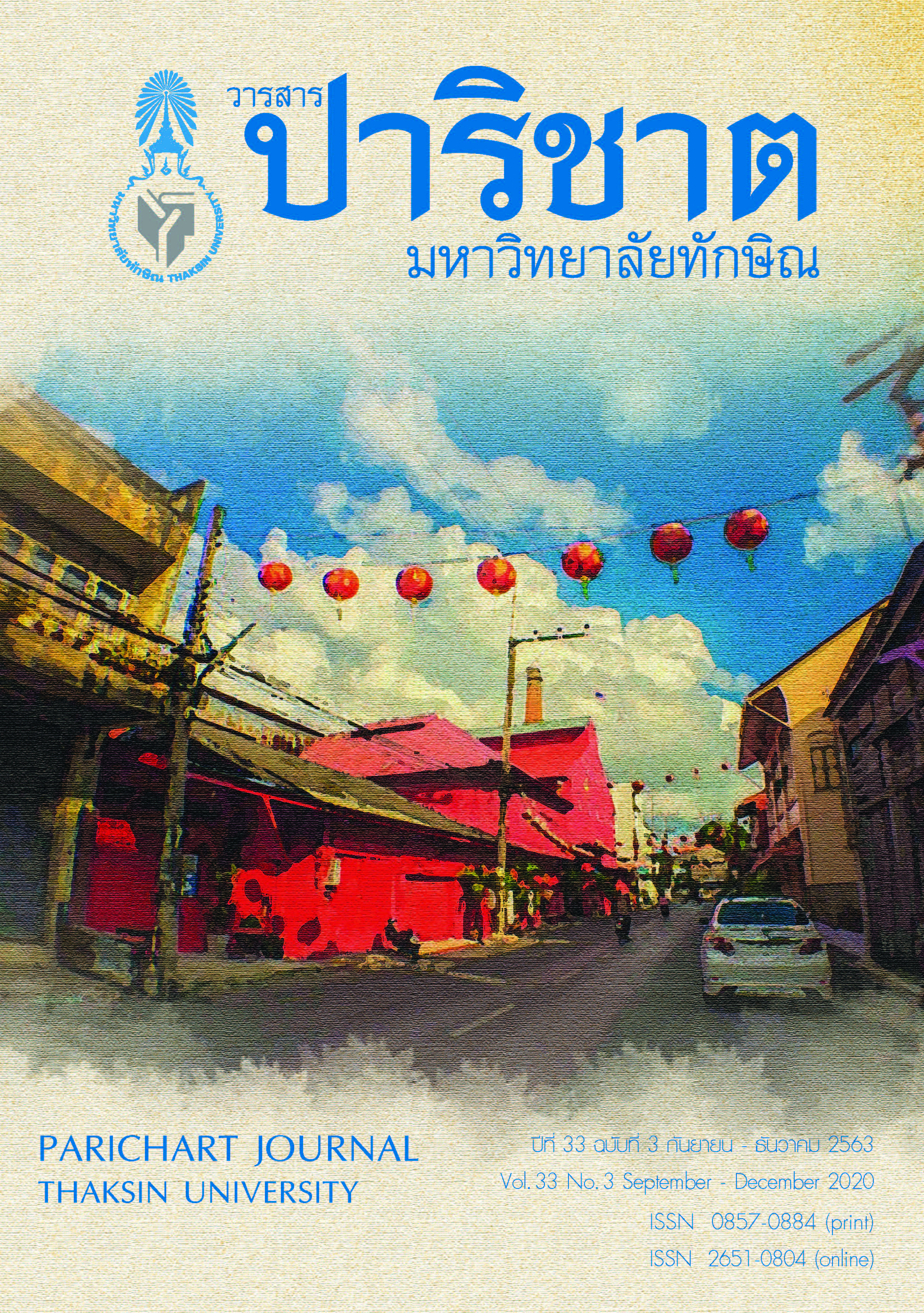The Examination of Cartography of Temples on Sathing Phra Island with Educational Process of Art History
Main Article Content
Abstract
This research article aimed to study the accuracy and reliability of Cartography of Temples on Sathing Phra Island as a primary document in order to understand age, skill level of artist, and important forms of fine arts that appear on the image which leads to comparison with the forms of the Ayutthaya art on Sathing Phra Island that how they were related. According to the study, it is believed that the map was actually written around the 18th century or late Ayutthaya period. By considering the painting technique, there was high possibility that the map was written and painted by a local artist since the map itself shows significant different writing forms and regulations from the artist in the central region. More importantly, the painter could distinctly identify locations of archaeological sites on Sathing Phra Island (Sathing Phra Peninsula area) as well as be able to draw the layout of traditional architecture, especially stupas and pagodas that appeared to be similar to the present one in many elements. However, there are some issues that are still unable to make a clear summary or conclusion due to insufficient evidence.
Article Details
References
Pongpiboon, S. (1995). Phako Temple. Bangkok: Amarin Printing and Publishing.
Saraya, T. (2002). Civilization and culture in Thai society. Bangkok: Chulalongkorn University.
Thiangtham, C. (2001). A study of Cartography of Kalapana Wat Pa-Kho Amphoe Sathingphra Songkhla Province. (Master of Arts degree program thesis in Thai Studies). Thaksin University.
Collection of the Phra Boromrachuthit textbook for Kalapana temples, Ayutthaya period, Region 1. (1967). The document printing committee in the history, culture and archeology of the Prime Minister’s Office. Bangkok: Prime Minister’s Printing Office.
Chronicle Book, Volume 25 (Chronicles, Region 41 (continued) -42-43). (1968).Bangkok: Teachers Council of Thailand.
The Fine Arts Department. (2009). tribhumi photo book, Khmer alphabet, Thai language. Bangkok: Fine Arts Department.
Bureau of Culture, Sports and Tourism Bangkok. (2014). Development of the Thai alphabet. Bangkok: Kaew Chao Chom Media Center.
Phisumpunwithi, P. (2012). Phra Wisut Soonthorn (Kosa Pan) Meeting Archives. Bangkok: National Learning Institute.
Chuvichien, P. (2004). Phra Borommathat Chedi of Nakhon Si Thammarat with an analysis of art history. (Master of Arts degree program thesis Art History Department of Art History College). Silpakorn University.
Testimony of Ayutthaya people, Testimony of Ayutthaya and the royal old chronicle of Ayutthaya Edition of Prasert Aksornthit. (1964). Bangkok: Klungwittaya.
The Royal Chronicle of Ayutthaya Edition of the royal script. (1973). Bangkok: Klungwittaya.
Kittikan, T. (2011). Mahathat: Concepts and guidelines in Thai architecture. (Thesis Program Doctor of Philosophy Degree Thai Art History Department of Art History College). Silpakorn University.
H. R. H. Prince Narisara Nuvadtivong. (1978). The princes’ correspondence (San Somdet), Volume 3. Bangkok: Thai Wattana Panich.
The Fine Arts Department. (1984). Inscriptions of the Sukhothai period. Bangkok: Department of Fine Arts.


